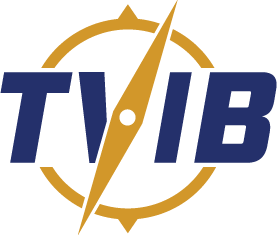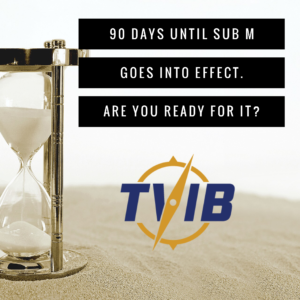USCG: TVNCOE Updates the FAQs
06/06/2018 – The following content was published on the Coast Guard Maritime Commons blog. Reposted in its entirety.
The Towing Vessel National Center of Expertise recently published the latest additions and updates to the Frequently Asked Questions regarding Subchapter M, inspected towing vessels. As a convenience for our readers, in this post Maritime Commons is providing a compilation of those changes. To access the full library of FAQs regarding Subchapter M, be sure to visit TVNCOE’s website.
Subchapter M FAQs updated as of May 29, 2018:
Part 136 – Certifications
FAQ 136-023: How will the next drydock be determined when generating a COI?
The next drydock date will be determined by the vessel’s operations and the initial COI date:
For vessels in salt water service the date for the next drydock would need to be within 36 months of the initial COI.
For a vessel in fresh water service the next drydock would need to be within 5 years of the initial COI.
See 46 CFR 137.300 for additional details.
Part 138 – Towing Safety Management System
FAQ 138-024: Will the Coast Guard document deficiencies found while onboard inspected towing vessels utilizing a Third Party Organization and Towing Safety Management System, and if so, how?
Documentation of deficiencies by the Coast Guard will depend on the type of inspection and presence of the vessel’s TPO.
• Deficiencies identified by a vessel’s TPO will be documented by the TPO in accordance with the vessel’s TSMS.
• Deficiencies identified when both the TPO and Coast Guard are present will be documented by the TPO in accordance with the vessel’s TSMS, with the exception of an inspection for certification.
• Deficiencies identified during an inspection for certification, which will occur once every five years, will be documented by the Coast Guard.
• The Coast Guard will document all marine casualties and may document major non-conformities or an unsafe condition as per the definitions provided in § 136.110.
Coast Guard inspectors will typically inspect TSMS vessels only once in five years, unless involved in a marine casualty. However, when deficiencies are found during those inspections, it may be indicative of a failed or failing system. To ensure effective oversight of vessels that utilize a TSMS and effective oversight of their Third Party Organizations, deficiencies issued to towing vessels during Coast Guard inspections must be documented and tracked. The CG-835V, Notice of Merchant Marine Inspection Requirements, is the method to document deficiencies identified during Coast Guard inspections onboard U.S. vessels. Marine Safety Manual Volume II, Section A, Chapter 3, requires all outstanding deficiencies issued on a CG-835V to be entered into MISLE.
Refer to CG-CVC Policy Letter 17-10, Deficiency Recording and Reporting for Vessels Using a TSMS Option.
Part 139 – Third Party Organizations
FAQ 139-011: When will the Coast Guard publish a list of Third Party Organizations?
Once a Third Party Organizations is approved, it will be listed and shared on the TVNCOE website. Currently, all Authorized Classification Societies are automatically approved to act as TPOs as permitted by the Subchapter M requirements. As part of an initiative to support a smooth rollout of Subchapter M, the Coast Guard is drafting additional implementation guidance for TPOs. See also CG-CVC Policy Letter 17-04, Subchapter M TPO Guidance. This line of effort should facilitate the TSMS Option and the 24-month phased-in compliance timeline.
FAQ 139-026: Some organizations will wish to apply to the Coast Guard to become a Subchapter M third-party organization to be able to provide Subchapter M compliance verification services immediately upon publication of the final rule. Will the Coast Guard offer additional guidance on this application process, and if so, when will this guidance be issued?
Yes. Section 139.120 of this rule sets out third-party organization (TPO) application requirements. Amplifying guidance, including an application checklist for TPOs can be found in CG-CVC Policy Letter 17-04, Subchapter M TPO Guidance, posted on the Towing Vessel National Center of Expertise’s website. We expect to update this guidebook frequently based on lessons learned as the TPO program is established.
FAQ 139-027: Who may do business as an “approved third party?”
Recognized and Authorized Classification Societies, and other private commercial companies that meet the requirements and are approved by the Coast Guard, may conduct work as prescribed in Subchapter M as a TPO. Part 139 of Subchapter M sets the requirements for TPOs. CG-CVC Policy Letter 17-04, Subchapter M TPO Guidanceprovides further information.
Part 140 – Operations
FAQ 140-001: What are the PIC requirements and when will they be implemented, considering that no one other than the Master or mate/Pilot typically holds an MMC?
PIC requirements have been outlined in CG-MMC Policy Letter 01-17, Guidelines for Issuing Endorsements for Tankerman PIC Restricted to Fuel Transfers on Towing Vessels.
FAQ 140-002: OSHA Coverage – Do OSHA requirements still apply to working conditions on towing vessels covered by Subchapter M of Chapter I of 46 CFR?
Yes. OSHA’s requirements for these towing vessels will remain in effect until July 20, 2018, or when the vessel obtains its COI, whichever date is earlier. See 29 C.F.R. 136.172. However, the Coast Guard remains the lead agency and continues to receive reports of marine casualties for injuries, death, etc. as currently required by 46 CFR part 4. Beginning July 20, 2018 or the date of the issuance of a COI for a towing vessel, whichever comes earlier, existing towing vessels covered by Subchapter M will be “inspected vessels” within the meaning of the1983 memorandum of understanding between the Coast Guard and OSHA and thus the working conditions of seamen on those vessels will not be covered by OSHA. Therefore, beginning on July 20, 2018, OSHA will cover seamen only on those towing vessels that will remain uninspected vessels. See 29 CFR 1936.105 for the types of towing vessels which will remain uninspected vessels.
A further delineation of the authorities of each agency and applicable requirements is provided in OSHA’s Directive: CPL 02-01-047 (Effective date: 02/22/2010) – Subject: OSHA Authority Over Vessels and Facilities on or Adjacent to U.S. Navigable Waters and the Outer Continental Shelf (OCS).
Part 143 – Machinery and Electrical Systems and Equipment
FAQ 143-036: 1) Can tachometers and the direction of the throttle be used as thrust monitoring? This seems reasonable for smaller vessels with traditional propeller propulsion. The preamble leads me to believe the Coast Guard is looking for something more sophisticated but virtually no small vessel operators I have encountered see the value in adding more instruments (at least on smaller vessels under 65’).
1.a.) Similarly, is the Coast Guard going to accept the position of the tiller on vessel equipped with tiller style steering as an acceptable means for rudder angle indication? Again, the preamble suggests that a Rudder Angle Indicator is needed even on tiller style steering systems, but the smaller operators that I am speaking with aren’t convinced of the value.
1) In part. Tachometers and throttles must be able to accurately and continually be capable of displaying direction and relative amount of thrust of an engine and/or propulsor in the ahead or astern mode. A tachometer is one example of a method to monitor thrust. Other methods may be used to monitor thrust to comply with §143.225.
1.a) Mechanical position of the steering tiller can be used as an alternative means of rudder angle indication if the position of the tiller and rudder can be directly and physically seen by the operator at each operating station. The direction of off-centerline thrust can be displayed by the use of mechanical or electronic rudder angle indicators. The use of vessel swing meters or swing of a compass card is another example.
Part 144 – Construction and Arrangement
FAQ 144-014: Guidance is needed as to what is necessary to demonstrate vessel stability if it is questioned by a TPO or the Coast Guard.
If the stability of the vessel is questioned by either the TPO or the Coast Guard, §144.300(b)(1) cannot be satisfied and the owner or operator must be able to show compliance with either §144.300(b)(2) or §144.300(b)(3). §144.300(b)(2) allows OCMIs to witness operational testing, to determine whether the vessel has adequate stability and handling characteristics. §144.300(b)(3) offers owners and managing operators an opportunity to present documentation, records, and/or calculations to the Coast Guard to prove adequate stability.
Click here to read the full post on the Coast Guard Maritime Commons blog.

